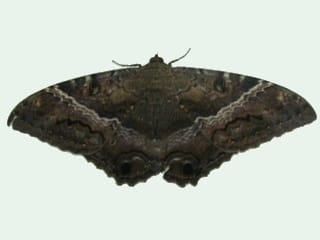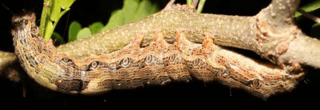Initially this guide displays common species likely to be flitting right now. Use the selectors below to view by color, include rare species, or search by name.
Over 100 species of butterflies and skippers have been identified in the Los Alamos area, and over 150 in the Jemez Mountains. This guide mainly includes the common species, but even some of these are difficult to tell apart. For example, we have 4 species of fritillaries with very subtle differences.
In addition, there are an equally large number of moths in the area. However, most moths are active at night they are not as readily observed. Therefore, this guide primarily focuses on the moths that are more obvious due to their size or the fact that they are active during the day. The easiest way to tell a moth from a butterfly is to look at the antennae. The moth has feathery or saw-edged antennae, while the butterfly has antennae that look like a long shaft with a bulb at the end. In addition, moths and butterflies tend to hold their wings differently. Moths tend to fold their wings down to form a tent over their abdomen, hiding it from view. In contrast, butterflies usually hold their wings vertically up over their backs.
Both butterflies and moths develop through a process of complete metamorphosis with four stages: egg, larva, pupa, and adult. The young are very different from the adults and often eat different types of food. Pictures of the caterpillar larva for many of the species in this guide are included.
Get current information by joining PEEC Butterfly Watchers and taking a look at PEEC’s Butterfly, Skipper, and Moth set on Flickr. Additional information can be found in Butterflies through Binoculars: The West and Kaufman Field Guide to Butterflies of North America. Close-focusing binoculars are the best equipment for watching adult butterflies and moths.
Butterfly and Moth References
BugGuide
Butterflies and Moths of North America
Cary, S., 2009 Butterfly Landscapes of New Mexico. New Mexico Magazine
eNature
Glassberg, J., 2001 Butterflies Through Binoculars: The West. Oxford University Press
How to Build a Butterfly Garden
Subject Area Experts (all guides)
Steve Cary (butterflies)
Beth Cortright (insects)
Terry Foxx (invasive plants)
Leslie Hansen (mammals)
Richard Hansen (fish, mammals)
Dorothy Hoard (butterflies, trees)
Chick Keller (flowers, herbarium)
Shari Kelley (geology)
Kirt Kempter (geology)
Garth Tietjen (reptiles)
David Yeamans (birds)
Web Development and Content Management
Pat Bacha
Jennifer Macke
Graham Mark
Akkana Peck
Contact
Please contact us for local nature questions and sightings. We welcome comments, corrections, and additions to our guides.
For more information about local nature, please visit our Nature Blog or subscribe to PEEC This Week.
Make Selection
 Photo: Chick Keller  Photo: bkovarkez  Photo: Clifton Albrecht | Black Witch, Mariposa de la Muerte(Ascalapha odorata)Family: Erebidae (Erebid Moths) Size: 4.5 - 6.5 in (11 - 17 cm) Color: black, brown Flits: Jan 01 - Oct 15 Status: native; common Food source: nectar, sap, and juice of fallen fruit Host: cassia and catclaw Habitat: not a habitat specialist; rests on building during the day The Black Witch is the largest moth in the continental United States and some resemblance to a small bat. Its wings are dark brown with wavy brown or black lines and a spot near the leading edge of the forewing that is shaped like a comma or numeral nine. Under certain circumstances, iridescent tinges of color may be seen around the spots and lines. Males are smaller than females and darker in color (top photo). Females have a distinctive undulating white bar crossing the wings (middle photo). The Black Witch is nocturnal and has an aura of darkness and misfortune associated with it. It is considered to be a harbinger of death or bad luck in many countries including Mexico. Alternatively, if you see a Black Witch after someone has died, it is interperted as meaning that the person has returned to bid you farewell. Info Photos |
